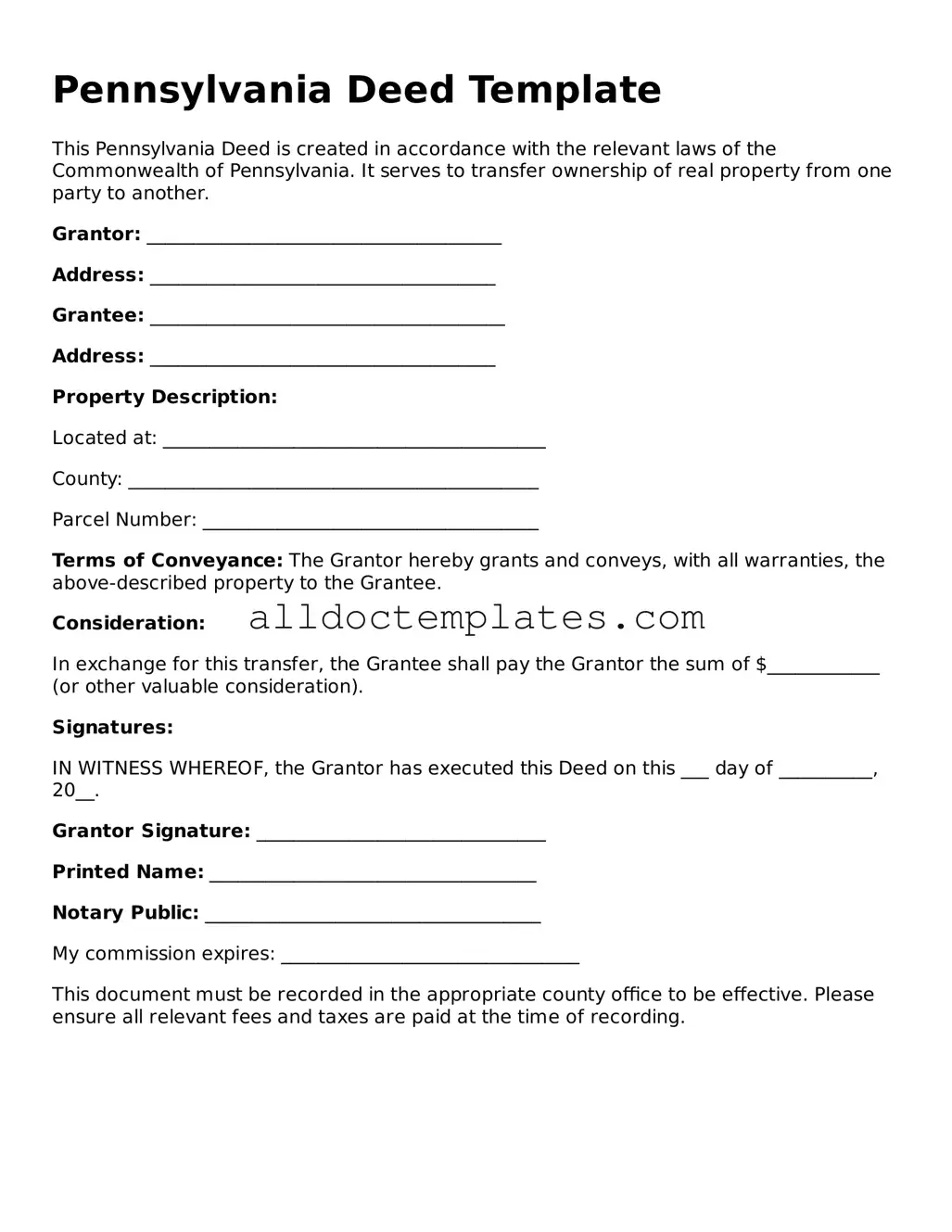Pennsylvania Deed Template
This Pennsylvania Deed is created in accordance with the relevant laws of the Commonwealth of Pennsylvania. It serves to transfer ownership of real property from one party to another.
Grantor: ______________________________________
Address: _____________________________________
Grantee: ______________________________________
Address: _____________________________________
Property Description:
Located at: _________________________________________
County: ____________________________________________
Parcel Number: ____________________________________
Terms of Conveyance: The Grantor hereby grants and conveys, with all warranties, the above-described property to the Grantee.
Consideration:
In exchange for this transfer, the Grantee shall pay the Grantor the sum of $____________ (or other valuable consideration).
Signatures:
IN WITNESS WHEREOF, the Grantor has executed this Deed on this ___ day of __________, 20__.
Grantor Signature: _______________________________
Printed Name: ___________________________________
Notary Public: ____________________________________
My commission expires: ________________________________
This document must be recorded in the appropriate county office to be effective. Please ensure all relevant fees and taxes are paid at the time of recording.
